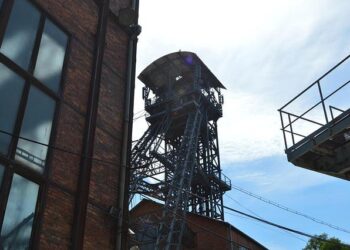The construction industry in many countries around the world is facing a labor shortage crisis.
The workforce is aging, fewer young people are entering the field, and those who are working have to take on longer hours to meet the demand. The issue particularly acute in Japan, where strict overtime regulations started in 2024. For construction to continue at the pace needed, something has to change.
There is a solution: remote operation of construction machinery.
How can construction equipment be operated remotely?
Remote-access technology can allow colleagues located far away to lend a hand when there aren’t enough workers in a particular area to get a job done. The concept isn’t new but, until now, remote work has been limited to specific tasks like loading dump trucks on large sites.
This must be expanded so remote workers can perform more specialized, demanding jobs. And in order for that to happen, improvements in operability and safety are crucial.
NTT is working to enable that through the IOWN All-Photonics Network (APN).
Because of its high capacity, low latency, and fixed delay, the IOWN APN allows for smooth remote control of construction machinery.
Site images can be transmitted with minimal delay so remote operators can accurately understand and react to site conditions, and more effectively control the machines – almost like being there, right on the site.
Examples of remote-control construction
NTT has demonstrated how well this can work. They set up a remote-control cockpit at the NTT Musashino Research and Development Center in Western Tokyo, Japan. There, they installed construction machinery at remote sites and linked the sites via the APN, enabling remote operation and site environment monitoring, in order to run test scenarios.
One test scenario involved a hydraulic excavator at the Komatsu IoT Center Tokyo, using a remote-control system.
The test confirmed the feasibility of smooth machinery operation using APN, demonstrating reduced latency and a faster on-site setup capability.
The demonstration also featured NTT’s ultra-low latency video transmission technology, capable of transmitting high-resolution video up to 8K120p in the SMPTE ST 2110 standard through an optical path. This allowed operators to get a detailed view of the site conditions, helping their real-time decision-making and operational efficiency.
A second test scenario was the remote operation of a stationary tower crane installed at the Takenaka Corporation West Japan Equipment Center in Osaka.
This involved the “JIZAIPAD” platform, equipped with JIZAIE’s low-latency image transmission technology, along with APN. The successful demonstration proved that remote operations could be conducted within an acceptable delay of 500 milliseconds, crucial for precision tasks such as lifting.
Integration with APN’s fixed delay feature further reduced buffer time in image transmission, improving the control and efficiency of remote operations over long distances.
Innovating the future of construction
These successful tests demonstrate that remote operation can improve operational efficiency and safety in construction, as well as enhancing the work environment. But there are other benefits, too: remote operation can reduce long working hours and can open opportunities for a more diverse workforce in the construction sector.
As IOWN APN technology continues to evolve and integrate with other innovations, such as drone monitoring, it carries with it the potential to transform the construction industry – and enable a socially sustainable future for all.
Find out more by watching this video.
>>> Read full article>>>
Copyright for syndicated content belongs to the linked Source : CIO – https://www.cio.com/article/1312232/building-the-future-of-construction.html































